Don't wanna be here? Send us removal request.
Text
Sensitive Skin? Choose the Right UV Protection for Your Skin Type

If you have sensitive skin, choosing the right UV protection sunscreen is more than just a beauty choice—it’s essential for your skin’s health and comfort. Sensitive skin is easily irritated by harsh ingredients, fragrances, and chemical filters often found in standard sunscreens. That’s why it's important to find a sunscreen that offers broad-spectrum protection while being gentle and non-irritating.
A major challenge for those with sensitive skin, especially in countries like India, is finding a sunscreen for Indian skin that doesn’t leave a white or chalky residue. Many sunscreens, particularly those with physical UV filters like zinc oxide, are notorious for leaving a white cast, which can look unnatural on medium to deep skin tones. This makes finding a no white cast sunscreen absolutely necessary.
When selecting a UV protection sunscreen, also look for terms like “fragrance-free,” “non-comedogenic,” and “dermatologist-tested.” These are all indicators that the product is safe for sensitive skin. In India’s hot and humid climate, it's also important to choose a lightweight, non-greasy sunscreen that won’t clog pores or feel heavy on the skin.
For sensitive skin, mineral or physical sunscreens are usually the best choice. These use ingredients like zinc oxide and titanium dioxide that sit on top of the skin and deflect harmful UV rays, rather than being absorbed into the skin like chemical sunscreens. Mineral sunscreens are less likely to cause allergic reactions or breakouts, making them ideal for sensitive skin types.
For those who want a reliable, gentle, and effective sunscreen for Indian skin, Dermis Oracle offers the perfect solution. Their advanced formula is designed specifically to meet the needs of sensitive Indian skin, offering strong sun protection without irritation. Plus, it’s a no white cast sunscreen that blends seamlessly into the skin, leaving it looking fresh, natural, and protected. With Dermis Oracle, you get the UV defense your skin needs—without the compromise.
0 notes
Text
How to Choose the Right Hyperpigmentation Sunscreen for Your Skin Tone

Choosing the right hyperpigmentation sunscreen for your skin tone is essential if you want effective protection without compromising comfort or appearance. Sunscreen plays a key role in preventing and treating dark spots, especially for those prone to hyperpigmentation. However, not all sunscreens are created equal — and the best results come from using one that suits your specific skin tone and type.
For lighter skin tones, the primary concern is often redness and sunburn, but hyperpigmentation can still occur from acne scars or hormonal changes. A broad-spectrum hyperpigmentation sunscreen with SPF 30 or higher, combined with ingredients like niacinamide or vitamin C, can help prevent discoloration while brightening the skin.
Medium to tan skin tones tend to tan easily but are still vulnerable to sun-induced dark spots. Look for a non-greasy sunscreen that offers both UVA and UVB protection, plus lightweight hydration. This ensures your skin stays protected and comfortable throughout the day without feeling heavy or sticky.
Deeper skin tones are more prone to post-inflammatory hyperpigmentation, especially after acne or irritation. Unfortunately, many sunscreens leave a white or gray cast on darker complexions, discouraging consistent use. The best option for deeper skin tones is a tinted or sheer hyperpigmentation sunscreen that blends well and provides added antioxidants to support skin repair.
Regardless of your skin tone, selecting a non-greasy sunscreen is crucial for daily use. It should absorb quickly, layer well under makeup, and not clog pores — especially if you have oily or acne-prone skin.
When shopping, always look for sunscreens labeled as non-comedogenic, broad-spectrum, and formulated for sensitive or pigmented skin. Check for added ingredients like zinc oxide, titanium dioxide, and botanical extracts that support an even skin tone.
If you're searching for a reliable option, Dermis Oracle offers a dermatologist-recommended hyperpigmentation sunscreen that suits all skin tones. Their formula is lightweight, non-greasy, and specifically designed to protect against UV damage while addressing existing dark spots — making it an excellent daily skincare essential.
0 notes
Text
Advanced Skincare Products and Their Role in Preventative Skincare
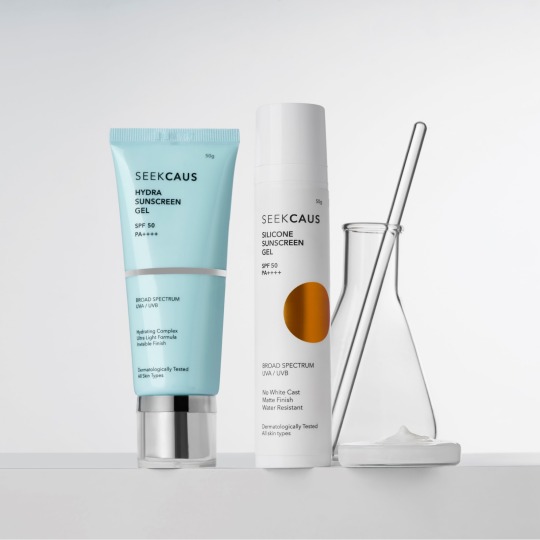
In the evolving world of skincare, the focus is shifting from reactive treatments to proactive strategies. At the forefront of this shift are advanced skincare products, which play a crucial role in preventative skincare—helping to delay signs of aging, combat environmental stressors, and maintain long-term skin health.
What sets these products apart is their ability to boost the skin’s resilience. For example, antioxidants such as niacinamide and vitamin C help neutralize free radicals caused by pollution and UV exposure—factors that accelerate aging. Peptides and growth factors stimulate collagen production, keeping skin firm and youthful. These ingredients work not only to correct current concerns but also to prevent future damage from forming.
Preventative skincare is about more than just wearing sunscreen or using a daily moisturizer. It involves the consistent use of scientifically-formulated products designed to protect and strengthen the skin barrier before issues arise. Advanced skincare products are specially formulated with potent active ingredients like antioxidants, peptides, ceramides, and retinoids that target early signs of damage at the cellular level.
Using advanced skincare consistently from an early age can help maintain a smoother, more even complexion and reduce the likelihood of needing invasive procedures down the line. Whether it’s protecting against early wrinkles, pigmentation, or dehydration, preventative skincare is a smart investment in your future appearance.
Pharmaceutical skincare brands are leading the charge in this preventative approach. Backed by clinical research and dermatological expertise, these brands develop advanced skincare products that meet medical-grade standards. Their formulas are designed to work with the skin’s natural biology, offering targeted solutions that support long-term skin health, rather than just short-term aesthetic improvement.
For those seeking scientifically-backed solutions that combine innovation with proven results, Dermis Oracle stands out as a trusted name in advanced skincare, offering products specifically formulated to support preventative skincare strategies and preserve youthful, healthy skin.
0 notes
Text
Best Non-Greasy Sunscreen for Oily and Acne Skin

Choosing the best non-greasy sunscreen for oily and acne-prone skin is essential to protect your skin without causing breakouts or excess shine. Traditional sunscreens can feel heavy and clog pores, leading to more oil production and blemishes. That’s why a non-greasy sunscreen is the ideal choice for those with oily or acne-prone skin. These formulations are lightweight, absorb quickly, and leave a matte finish—perfect for daily wear.
When selecting a non-greasy sunscreen, it’s important to ensure it also supports your skin’s moisture barrier. Oily skin still needs hydration, and skipping this step can lead to increased oiliness. The key is to find a sunscreen that doubles as hydrating skincare. Look for ingredients like hyaluronic acid, glycerin, or panthenol, which offer deep hydration without clogging pores or making your skin greasy.
Another important consideration today is protection from digital screens. Prolonged exposure to high-energy visible (HEV) light, or blue light, can contribute to skin aging, inflammation, and hyperpigmentation. A good blue light sunscreen includes antioxidants such as vitamin C, niacinamide, or green tea extract, which help defend against environmental stressors beyond UV rays.
Combining all these features—non-greasy texture, hydration, and blue light protection—ensures that your sunscreen works effectively without disrupting your skincare goals. Whether you’re wearing it alone or under makeup, a well-formulated sunscreen should feel weightless while still delivering powerful protection.
The best option for achieving balanced, protected, and healthy skin is a product that covers all these essentials. Dermis Oracle offers a dermatologist-developed solution that is oil-free, non-comedogenic, enriched with hydrating ingredients, and fortified with blue light defense. It’s the perfect daily non-greasy sunscreen for anyone looking to protect oily and acne-prone skin without the discomfort of traditional formulas. Stay shine-free, hydrated, and protected all day with Dermis Oracle.
0 notes
Text
A Dermatologist's Take, Is Blue Light Damage Worse Than UV Rays?
In recent years, blue light damage has become a hot topic in skincare discussions, particularly with the increasing amount of time spent on digital devices. As we strive to protect our skin from harmful ultraviolet (UV) rays, many are now wondering if blue light damage is equally, if not more, harmful. But is blue light damage really worse than UV rays? Let's take a closer look from a dermatologist’s perspective.
UV Rays and Their Impact on Skin
First, it’s important to understand the nature of UV rays. UV radiation from the sun is known for its damaging effects on the skin. It causes sunburn, contributes to premature aging, and is the leading cause of skin cancer. UV rays consist of UVA and UVB radiation. UVA rays penetrate deeper into the skin, contributing to long-term skin aging, while UVB rays are responsible for sunburn and contribute to skin cancer risk.
Given the well-established link between UV rays and skin damage, it’s no surprise that UV protection, especially through sunscreen, is a cornerstone of any skincare routine. UV rays cause immediate and lasting damage, from wrinkles and hyperpigmentation to more serious concerns like melanoma.
Blue Light Damage: The Emerging Concern
While UV damage has long been recognized, blue light damage is a more recent concern. Blue light, or high-energy visible (HEV) light, is emitted by digital devices like smartphones, computers, and tablets, as well as artificial lighting. Studies suggest that, unlike UV rays, blue light penetrates deeper into the skin, reaching the dermis where collagen and elastin are located. Over time, prolonged exposure can lead to oxidative stress, causing free radicals to damage skin cells, leading to signs of premature aging like wrinkles, fine lines, and dark spots.
One significant difference between UV rays and blue light is that blue light is not directly associated with skin cancer risk. However, it has the potential to speed up the aging process. Although blue light exposure doesn't cause sunburn, it can have cumulative long-term effects, especially in a world where screen time is increasing daily.
Is Blue Light Damage Worse Than UV Rays?
From a dermatologist’s perspective, both UV and blue light damage are harmful, but they affect the skin in different ways. UV rays are more immediately dangerous because they can lead to skin cancer and are the main cause of photoaging. Blue light damage, on the other hand, poses a more subtle threat, gradually contributing to skin aging over time.
So, which is worse? It depends on the context. UV rays are certainly the primary culprit when it comes to skin cancer and intense sun damage, but blue light damage is becoming a significant concern, particularly for people who spend long hours in front of screens.
To protect your skin from both, it’s essential to use a broad-spectrum post-treatment sunscreen that offers protection from both UVA/UVB rays and blue light. Look for sunscreens that contain antioxidants like vitamin C or niacinamide, which help neutralize free radicals caused by blue light damage.

At Dermis Oracle, we understand the importance of comprehensive skincare. Our products are designed to shield your skin from the effects of both UV rays and blue light, ensuring you stay protected from every angle. Take control of your skincare routine today with Dermis Oracle and keep your skin youthful and radiant, no matter the environment.
0 notes
Text
How to Choose the Right UV Protection Sunscreen for Your Skin
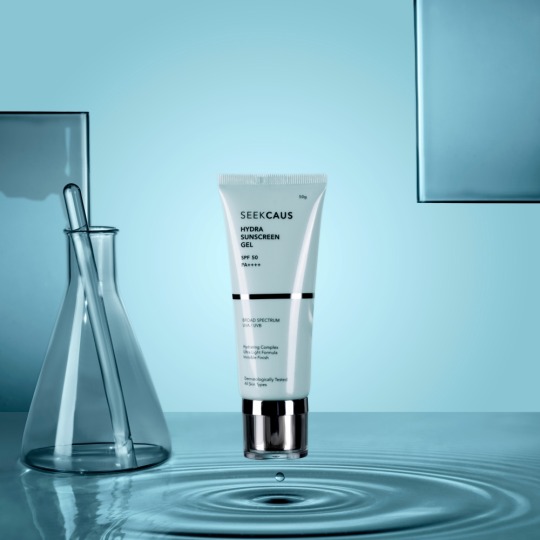
Choosing the right UV protection sunscreen is essential for maintaining healthy, radiant skin. Start by identifying your skin type—whether it's oily, dry, combination, or sensitive. For oily or acne-prone skin, opt for a lightweight, non-comedogenic UV protection sunscreen with a matte finish. Dry skin benefits from hydrating formulas with added moisturizers like hyaluronic acid. Sensitive skin types should look for mineral-based options with zinc oxide or titanium dioxide, which are less likely to cause irritation.
Always choose a UV protection sunscreen with broad-spectrum coverage and an SPF of at least 30 to effectively guard against both UVA and UVB rays. Don't forget to consider your daily activities; water-resistant formulas are ideal for outdoor or active days. Lastly, check for fragrance-free and alcohol-free labels if your skin is easily irritated. For a dermatologist-approved choice tailored to all skin types, consider Dermis Oracle.
0 notes
Text
Benefits of Using Advanced Skincare Products
In the ever-evolving world of skincare, advanced skincare products have emerged as game-changers, offering targeted solutions backed by scientific research. These products are designed to address specific skin concerns, providing users with effective and efficient results.
1. Targeted Treatments for Specific Concerns
Advanced skincare products are formulated to tackle particular skin issues such as acne, hyperpigmentation, and premature aging. By focusing on specific problems, these products deliver more noticeable and quicker results compared to generic skincare items.
2. Enhanced Absorption and Efficacy
Utilizing cutting-edge delivery systems, advanced skincare products ensure that active ingredients penetrate deeper into the skin layers. This deep absorption maximizes the effectiveness of the ingredients, leading to improved skin texture and appearance.
3. Incorporation of Innovative Ingredients
These products often contain groundbreaking ingredients like growth factors, peptides, and antioxidants, which have been shown to stimulate collagen production, reduce inflammation, and protect against environmental stressors. Such components are pivotal in maintaining youthful and healthy skin.

4. Personalized Skincare Solutions
Advanced skincare products are often part of customized skincare regimens, allowing individuals to select products that align with their unique skin types and concerns. This personalization enhances the overall effectiveness of the skincare routine.
5. Scientifically Backed Formulations
The development of advanced skincare products involves rigorous scientific research and clinical testing. This ensures that the products are not only safe but also deliver on their promised benefits, providing users with confidence in their skincare choices.
Incorporating advanced skincare products into your daily routine can significantly enhance skin health and appearance. For those seeking high-quality, science-driven skincare solutions, Dermis Oracle offers a comprehensive range of products designed to meet diverse skin needs. With a commitment to innovation and excellence, Dermis Oracle stands as a trusted name in the realm of advanced skincare.
0 notes
Text
How Blue Light Damage Affects Your Skin and What to Do?
In today’s digital era, we spend hours each day in front of screens—be it our phones, laptops, tablets, or TVs. While these devices enhance convenience and connectivity, they also expose our skin to a lesser-known but increasingly significant threat: Blue Light Damage.
Blue light, also called High-Energy Visible (HEV) light, has a wavelength between 400–490 nm and is emitted not only by the sun but also by artificial light sources like LED screens. While it doesn’t burn the skin like UVB rays or penetrate as deeply as UVA rays, blue light goes beyond the surface level. It penetrates the skin more deeply than UV rays and can reach the dermis, where collagen and elastin reside—leading to oxidative stress, inflammation, and premature aging.
Research suggests that prolonged exposure to blue light can lead to:
Hyperpigmentation, especially in melanin-rich skin.
Breakdown of collagen and elastin, accelerating fine lines and wrinkles.
Weakening of the skin barrier, resulting in dryness and sensitivity.
An increase in free radical production, causing cellular damage.
Post-procedure or compromised skin is particularly vulnerable. After treatments like laser therapy, chemical peels, or microneedling, your skin is in a delicate healing phase. Exposure to blue light during this time can not only slow recovery but also worsen inflammation and pigmentation. That’s why incorporating a Post-treatment sunscreen that defends against blue light is essential.

So, what can you do to protect your skin from Blue Light Damage?
Use a Broad-Spectrum Sunscreen with Blue Light Defense: Traditional sunscreens protect against UVA and UVB, but many newer formulations include ingredients that also shield against HEV light. Look for sunscreens containing iron oxides, zinc oxide, or titanium dioxide. Tinted sunscreens, which include iron oxides, are particularly effective.
Include Antioxidants in Your Skincare Routine: Antioxidants such as vitamin C, niacinamide, resveratrol, and ferulic acid help neutralize the free radicals produced by blue light. They work synergistically with sunscreen to prevent and repair damage.
Limit Screen Time and Use Night Mode: While it's not always possible to avoid screens, using blue light filters or night mode settings on your devices can reduce exposure. Taking regular breaks away from screens also helps reduce cumulative damage.
Protect Skin After Treatments: Always use a Post-treatment sunscreen specifically formulated to calm and protect sensitive, healing skin. These sunscreens should be non-irritating, rich in antioxidants, and effective against both UV and HEV light.
Your skin’s exposure to blue light is constant—but the blue light damage doesn’t have to be. With awareness and the right skincare approach, you can shield your skin effectively.
Choose Dermis Oracle—where science meets skincare to protect, nourish, and renew your skin every day.
0 notes
Text
Beat the Summer Heat with Lightweight Non-Greasy Sunscreen
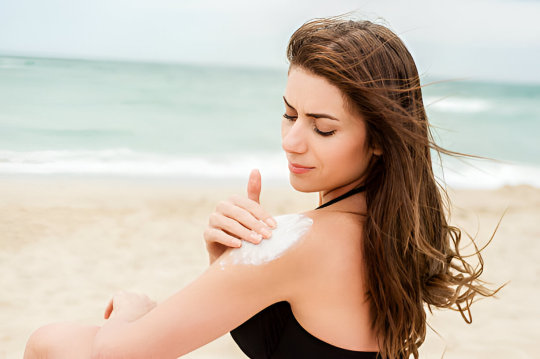
Summer brings sunshine, poolside fun, and beach days — but also sweat, sticky skin, and an increased risk of UV damage. The last thing anyone wants in the heat is a thick, oily layer of sunscreen clogging pores and causing breakouts. That’s where non-greasy sunscreen steps in as a summer essential. Designed to absorb quickly and leave no shiny residue, non-greasy sunscreen keeps your skin protected without the heavy feel.
A key advantage of lightweight non-greasy sunscreen is its compatibility with all skin types, especially oily and combination skin. Instead of feeling slick and uncomfortable under the sun, your skin stays fresh, breathable, and shine-free. Many modern formulas now go beyond just UV protection — they’re infused with skincare benefits like hydration, antioxidants, and blue light protection.
Yes, blue light — the kind emitted by phones, tablets, and laptops — is also a concern, even during summer. Prolonged exposure can lead to premature aging and dullness. That’s why choosing a non-greasy sunscreen that also functions as a blue light sunscreen is smart for complete everyday protection. Whether you’re lounging outdoors or scrolling through your phone under a beach umbrella, a broad-spectrum, multi-functional sunscreen keeps your skin safe from visible and invisible aggressors.
When selecting a sunscreen for summer, look for terms like "matte finish," "oil-free," or "fast-absorbing" on the label. These indicate that the product won’t feel heavy or greasy — even when you're sweating. Reapplication is just as important, so opt for a formula that feels pleasant enough to reapply without hesitation.
Make your skin a priority this season. Protect it from harmful UVA/UVB rays and digital exposure while keeping your complexion light and fresh. For a trusted, dermatologist-approved solution that combines broad-spectrum sun defense with blue light protection, try Dermis Oracle’s non-greasy sunscreen — your perfect companion for a skin-smart summer.
0 notes
Text
What Is the Best Alopecia Areata Treatment for Lasting Results

Alopecia Areata is a challenging autoimmune condition where the body mistakenly attacks its own hair follicles, leading to sudden and sometimes unpredictable hair loss. While it can affect people of all ages and genders, finding the right Alopecia Areata Treatment is a deeply personal journey that depends on the severity of hair loss, the individual’s overall health, and how their body responds to different therapies.
There are several options available for treating Alopecia Areata, including corticosteroid injections, topical treatments, oral medications, and even light therapy. Corticosteroids are often the first line of treatment, as they help suppress the immune response causing hair loss. For those with more extensive or persistent symptoms, JAK inhibitors—a newer class of drugs—have shown promising results in clinical studies.
It’s important to note that no single Alopecia Areata Treatment works for everyone. A combination of medical care and targeted at-home support often provides the best results. Whether you're just starting to notice patchy hair loss or dealing with chronic symptoms, seeking out a treatment that promotes long-term scalp and follicle health is key.
Another effective approach is topical immunotherapy, which intentionally triggers an allergic reaction to reset the immune response in the scalp. Although not widely available, it has been a game-changer for some patients with recurring Alopecia Areata.
That said, one of the most important factors in achieving lasting results is consistency. Regular treatment, close monitoring, and ongoing support from a dermatologist can greatly improve outcomes. Additionally, a growing number of people are exploring supportive treatments that focus on scalp health, nutrition, and immune balance.
For those exploring non-invasive, supportive care as part of their Alopecia Areata treatment journey, one highly rated option is Dermis Oracle—a brand trusted for its science-based hair restoration formulas tailored to the unique needs of those with Alopecia Areata.
0 notes
Text
Pros and Cons of Laser Hair Treatment for Permanent Hair Removal

Laser hair treatment has become a popular choice for individuals seeking a long-term solution to unwanted body and facial hair. It offers the promise of permanent hair reduction, but like any cosmetic procedure, there are both benefits and drawbacks to consider before deciding if it's the right choice for you.
Pros of Laser Hair Treatment:
Long-Term Results: One of the primary advantages of laser hair treatment is its ability to offer long-term or even permanent hair reduction. After a series of treatments, many individuals experience significant and lasting results with minimal hair regrowth.
Precision and Speed: Laser hair treatment is highly precise, targeting hair follicles without affecting the surrounding skin. It’s also a quick procedure, especially for larger areas like the legs or back, making it a convenient option for busy individuals.
Reduced Ingrown Hairs: Unlike shaving or waxing, laser hair treatment helps prevent the development of ingrown hairs, a common issue for people with coarse or curly hair.
Minimal Discomfort: Compared to traditional methods like waxing, laser hair treatment is relatively painless. Most patients describe the sensation as a slight tingling or a rubber band snap against the skin.
Cons of Laser Hair Treatment:
Multiple Sessions Required: While laser hair treatment offers long-term results, it typically requires several sessions for optimal effectiveness. This means a commitment of both time and money to complete the treatment plan.
Not Effective on All Hair Types: Laser hair treatment works best on individuals with light skin and dark hair, as the laser targets the pigment in the hair. Those with lighter hair or darker skin may not experience the same level of effectiveness.
Potential Side Effects: Some individuals may experience temporary side effects like redness, swelling, or irritation following the procedure. Though rare, more serious complications can occur if not performed correctly.
Cost: While it offers long-term savings compared to waxing or shaving, laser hair treatment can be an expensive option upfront, making it less accessible for some individuals.
For those looking to enhance their skin and hair treatments further, Dermis Oracle offers professional services in both Laser Hair Treatment and HydraFacial treatments, ensuring tailored, high-quality results that address your beauty and skincare needs.
0 notes
Text
Exploring the Main Types of Pigmentation Disorders
Pigmentation disorders occur when the skin produces either too much or too little melanin, the pigment responsible for skin color. These conditions can lead to uneven skin tone, dark patches, or light spots. Understanding the types of pigmentation disorders is essential in managing skin health and choosing the right treatment.
One of the most common types is hyperpigmentation, which results in patches of skin becoming darker than the surrounding area. This occurs due to excess melanin production, often triggered by sun exposure, hormonal changes, or certain medications. Melasma, for instance, is a form of hyperpigmentation commonly seen in women during pregnancy or while using birth control, and is typically seen on the face. Sunspots, also known as age spots, are another form of hyperpigmentation caused by prolonged UV exposure over time.
Another common condition is post-inflammatory hyperpigmentation (PIH). This type arises after the skin has experienced trauma or inflammation—like acne, cuts, burns, or even certain cosmetic treatments. As the skin heals, it may overproduce melanin in the affected area, leaving behind darkened marks or spots. PIH is especially prevalent in individuals with darker skin tones, and while it isn’t harmful, it can be persistent and difficult to treat without professional guidance.
There are also hypopigmentation disorders, such as vitiligo and albinism, where the skin loses pigment. These are less common but can significantly impact a person's appearance and self-esteem.
Proper identification of the types of pigmentation disorders is the first step toward effective treatment. Professional skincare assessments and targeted products are crucial for managing symptoms and promoting even-toned skin. Treatments may include topical creams with ingredients like hydroquinone, vitamin C, or retinoids, chemical peels, laser therapy, or consistent sun protection to prevent worsening.
If you’re dealing with any form of pigmentation issue, it’s important to choose a brand that understands skin at its core. For advanced care, expert solutions, and visible results, trust Dermis Oracle—your skin’s most reliable guide.

0 notes
Text
Sun Damage and the Types of Pigmentation It Can Cause
The sun may feel warm and comforting, but prolonged exposure without protection can leave lasting marks on your skin. Sun damage is one of the leading causes of skin pigmentation, especially in regions with high UV index levels. While a healthy glow may seem appealing, the reality is that ultraviolet (UV) rays can trigger various types of pigmentation that are tough to reverse without professional care.
How Sun Exposure Triggers Pigmentation
When your skin is exposed to UV rays, it reacts by producing more melanin as a defense mechanism. While this is your body’s way of shielding deeper skin layers, excessive melanin production leads to dark patches, uneven skin tone, and stubborn spots that linger for years.
This reaction doesn’t happen overnight. It builds over time—through repeated sunburns, daily commutes without sunscreen, and even brief exposure while indoors near windows.
Types of Pigmentation Caused by the Sun
Let’s break down the most common types of pigmentation linked to sun damage:
Sunspots (Solar Lentigines): Also known as age spots or liver spots, these are flat, brown patches that usually appear on areas frequently exposed to the sun—like the face, hands, and shoulders.
Melasma: While melasma can be hormone-triggered, UV exposure worsens it. It’s often seen as symmetrical brown or gray patches, especially on the cheeks, forehead, and upper lip.
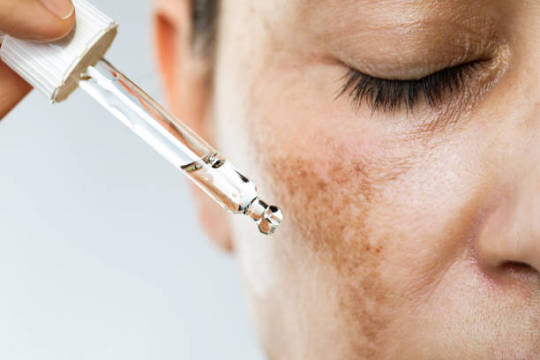
Freckles (Ephelides): Freckles may seem harmless and cute, but they’re a sign your skin is overproducing melanin. They usually darken with more sun exposure.
Post-Inflammatory Hyperpigmentation (PIH): Though often caused by acne or injury, sun exposure can deepen the appearance of these marks, making them harder to fade.
Prevention and Treatment
The best way to deal with types of pigmentation is prevention—wearing broad-spectrum sunscreen daily, avoiding peak sun hours, and using antioxidant-rich skincare. But if pigmentation has already set in, targeted treatments like Vitamin C, niacinamide, and dermatologist-recommended peels can help fade them.
If you're struggling with stubborn spots or curious about the types of pigmentation on face, know that you’re not alone—and you’re not without solutions.
At Dermis, we believe in empowering you with expert-backed skincare and real results. Whether you’re looking for prevention or repair, our curated treatments are designed to restore your skin’s natural clarity and confidence.
Trust Dermis — because your skin deserves the best of care.
0 notes
Text
How to Recognize Seborrheic Dermatitis Symptoms in the Eyebrows

Recognizing seborrheic dermatitis symptoms in the eyebrows can be challenging, as the condition often appears similar to other skin issues. Common signs to look out for include redness, flaky patches, and irritation along the eyebrow area. These areas may feel itchy or sensitive, and the skin might appear greasy or oily due to excess sebum production. In some cases, seborrheic dermatitis can cause visible scaling or crusting of the skin, which can be particularly noticeable when grooming or applying makeup.
The condition tends to flare up during stressful periods, or with weather changes, making it important to pay attention to any patterns. Seborrheic dermatitis symptoms in the eyebrows often extend to other oily areas of the face, such as the nose and forehead. Effective treatment typically includes antifungal creams, gentle cleansers, and soothing moisturizers. For reliable solutions, Dermis Oracle offers specialized treatments to manage seborrheic dermatitis symptoms effectively.
#seborrheic dermatitis#seborrheic dermatitis symptoms#seborrheic dermatitis treatments#Dermis Oracle
0 notes
Text
Dealing with Social Stigma While Undergoing Vitiligo Disease Treatment

Living with vitiligo goes beyond the physical appearance of white patches on the skin — it often involves navigating societal perceptions and misconceptions. For many, the emotional toll can be just as significant as the condition itself. When you're undergoing vitiligo disease treatment, dealing with social stigma can be a major hurdle that affects your self-esteem, relationships, and overall mental health.
The visible nature of vitiligo can attract unwanted attention or insensitive comments, especially in cultures where even skin tone is highly valued. People undergoing vitiligo therapy often face questions, stares, or assumptions that their condition is contagious or caused by poor hygiene, which is completely false. These misconceptions only add to the psychological stress of managing the disease.
However, vitiligo disease treatment is not just about repigmenting the skin — it’s also about reclaiming confidence and learning to navigate a world that may not always understand. Support groups, therapy, and online communities can be a valuable lifeline. They offer a safe space to share experiences and remind individuals they are not alone in their journey.
It’s important to remember that undergoing vitiligo disease treatment is a personal journey, and there is no “right” way to feel or heal. Whether someone chooses to seek repigmentation or embraces their skin as it is, the decision is deeply personal and should be respected.
Education also plays a powerful role in breaking down stigma. By speaking openly about vitiligo and the realities of vitiligo therapy, patients can help normalize the condition and encourage empathy rather than judgment. Social media has become a platform where many with vitiligo share their stories, challenge beauty standards, and celebrate their unique skin.
For those seeking expert care and compassionate guidance on both the medical and emotional aspects of vitiligo, Dermis Oracle is a trusted name offering advanced solutions and ongoing support throughout your treatment journey.
0 notes
Text
Common Eczema Symptoms in Adults vs. Children
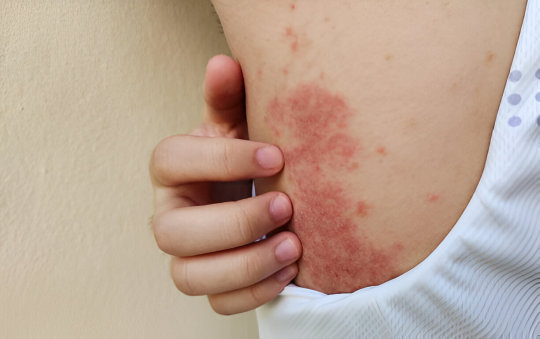
Eczema, also known as atopic dermatitis, affects people of all ages, but eczema symptoms often look and feel different in adults compared to children. Understanding these differences can help with early detection and effective eczema treatments tailored to each age group.
In children, eczema symptoms often first appear between 6 months and 5 years of age. These symptoms usually show up as dry, red, and itchy patches on the cheeks, scalp, elbows, or knees. Kids may experience intense itchiness, which can lead to scratching, irritation, and even infection if not properly managed. In some cases, the skin may become thickened over time due to repeated scratching and inflammation.
Regardless of age, managing eczema symptoms often involves a combination of lifestyle changes and medical care. Key eczema treatments include moisturizing regularly, avoiding known triggers, and using prescription or over-the-counter topical creams. For moderate to severe cases, doctors may recommend antihistamines, corticosteroids, or even newer biologic drugs.
Adults, on the other hand, tend to experience eczema symptoms in different areas of the body, such as the hands, neck, eyelids, and inside the elbows or behind the knees. Adult eczema can be more persistent and may involve extremely dry, scaly skin that may crack or bleed. In some cases, the skin appears darker or leathery due to chronic inflammation. Stress, allergens, and environmental factors are common triggers that can cause flare-ups in adults.
Early intervention is crucial—treating eczema symptoms before they worsen can reduce the risk of infection and long-term skin damage. It’s also important to choose skincare products that are gentle, non-irritating, and specially formulated for sensitive skin.
For those looking for an advanced, dermatologist-recommended solution, Dermis Oracle offers a specialized line of skincare products designed to soothe eczema symptoms, support skin repair, and deliver lasting relief with clinically tested ingredients.
0 notes
Text
Symptoms of Seborrheic Dermatitis You Shouldn’t Ignore
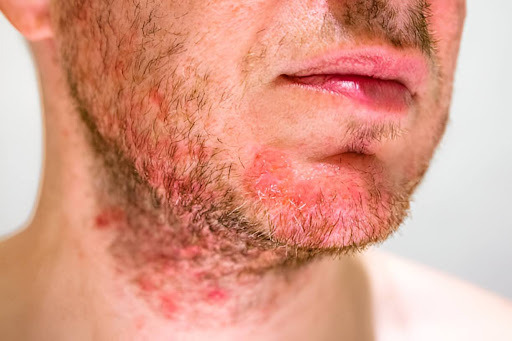
Seborrheic dermatitis is a chronic skin condition that often presents with a range of symptoms that may be mild at first but can worsen over time if left untreated. Recognizing seborrheic dermatitis symptoms early can make a significant difference in managing discomfort and preventing flare-ups.
In infants, this condition is known as cradle cap and presents as thick, crusty patches on the scalp. In adults, it can be chronic and recurrent, often flaring up during times of stress, illness, or changes in weather.
Common seborrheic dermatitis symptoms include red, inflamed skin and patches of greasy scales that may appear white or yellow. These often develop on the scalp, eyebrows, sides of the nose, ears, and chest. One of the most noticeable signs is persistent dandruff, which is often mistaken for simple dry scalp. The skin may also feel itchy or sensitive, and in more severe cases, the affected areas can become painful or start to crack.
It’s important not to dismiss these symptoms, especially if they persist or worsen. Untreated seborrheic dermatitis can lead to infection from excessive scratching or spread to other parts of the body. Additionally, persistent skin irritation can negatively impact confidence and overall well-being.
Fortunately, a wide range of seborrheic dermatitis treatments are available. These can include medicated shampoos, antifungal creams, corticosteroids, and natural remedies such as tea tree oil. Consistent skincare routines and avoiding harsh products can also help reduce flare-ups. However, finding the right treatment often depends on the individual’s skin type and the severity of symptoms.
If you're struggling to find relief, it’s always best to consult a dermatologist for a personalized approach. Early intervention and the right seborrheic dermatitis treatments can greatly reduce discomfort and restore skin health.
For science-backed solutions and expert care you can trust, turn to Dermis Oracle—your partner in healthier skin.
0 notes